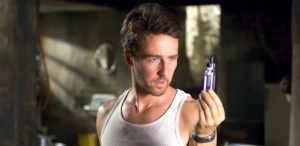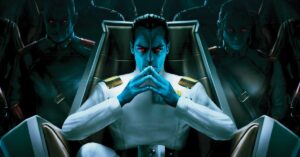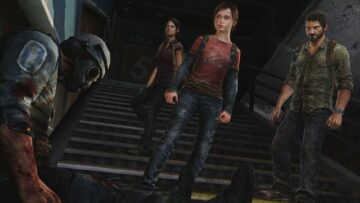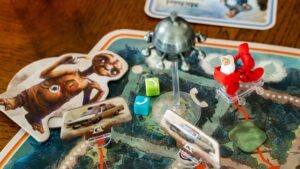Movies used to have loads of kissing — even movies for children. Maybe especially movies for children. Handsome princes kissed princesses, Wally Cleaver kissed Karen in Leave It to Beaver, and Anna Chlumsky and Macaulay Culkin famously kissed in My Girl. For a while, movies treated growing up as synonymous with kissing. It’s one of the first “adult” things people look forward to when they’re young (usually after a healthy period of being grossed out by the thought), and it’s something many people continue to look forward to well into adulthood. A good movie kiss is fun to watch and an exciting story development, a sign that the relationship between two characters is going to get deeper or more complicated. If you’re a character in the Marvel Cinematic Universe, though? It might never happen.
At some point during Disney Plus’ miniseries WandaVision, which is expressly focused on a romantic relationship, I started to wonder: How often do characters actually kiss each other in the MCU? PDA isn’t entirely lacking in the franchise; Tony and Pepper kiss plenty, and Thor kisses Jane Foster — but looking back on so many hours of action movies without so much as the faintest hints of romance, it began to feel like the MCU avoids even the tamest signs of affection. These are action movies built around big exciting fights, not characters racing dramatically to airports to confess their feelings to each other. (Perhaps the MCU should have a few of those scenes. Just an idea.)
So I set out to learn not merely how many kisses are in the MCU, but why people kiss in the franchise. The answers are surprising — when you ignore everything else in these movies and shows, and only pay attention to the kissing, you start to discover how conservative MCU romances are, and wonder whether the people kissing even like each other all that much. (Very few good kissers in these movies. Thor might be the best at it.)
A point of order before we begin: This list is limited to Marvel Studios projects only. This means we’re talking about movies set in the Marvel Cinematic Universe, and the Disney Plus TV shows that kicked off with WandaVision. So, sorry, we’re gonna have to ignore Netflix’s Marvel shows, along with various other licensed spinoffs like Agents of SHIELD, Cloak & Dagger, or Legion for this list. Let’s begin.
Phase 1: The action-hero kiss
Kissing is a weird lens to examine anything through, and it’s a particularly narrow field of vision to focus on 23 movies and two TV shows. But when you take in the world from any new perspective, it’s easier to notice things that wouldn’t otherwise be apparent. When watching Phase One of the MCU strictly for the kissing, one thing leaps out very quickly: These movies are all the freaking same.
Future MCU hype cycles stressed how these weren’t just superhero movies, they also toyed with tropes from other familiar genres. Not so for this first batch — more than anything, the people responsible for these movies were nervous, and that hesitation shows in their portrayal of their lead characters. Tony Stark, Bruce Banner, Thor Odinson, and Steve Rogers are superheroes second, and action-movie stars first. They’ve got problems, sure, but they’re gonna save the world and get the girl, and with a little adjustment, those same problems will help them do it.
Women are usually the means by which their character defects are worked out, and kissing happens when they’re either doing a good or a bad job of it. This makes Iron Man, the first MCU film, particularly noteworthy. The film uses a hookup with a reporter as a lazy shorthand for showing off what a rascal Tony Stark is at the beginning of the film. Subsequently, Pepper Potts — the woman Tony should be with — slut-shames the reporter to illustrate the gulf between them with sexist flair.
It’s worth noting that Pepper and Tony don’t actually kiss until he’s willing to commit to her at the end of Iron Man 2, after doing a whole second movie’s worth of growing up. Pepper and Tony are the most enduring and prominent couple in the MCU, and they’re also the most traditional and conservative. Tony Stark may have been cut from the mold of wisecracking male action-movie leads, but the longer he endured, the more those edges were filed off.
This dynamic repeats itself in miniature in two brief scenes from Captain America: The First Avenger. The first is when Private Lorraine (played by Natalie Dormer) pulls Steve Rogers aside after he’s become a war hero to thank him on behalf of “the women of America” with a big, horny kiss. This is why Peggy Carter, seeing him holding an unfinished version of his trademark shield, decides to test it by shooting at him. He let the wrong kind of girl kiss him.
He later kisses the right one (Peggy herself) in a big action-hero moment, right before he leaps off a speeding vehicle onto the jet where he’ll have his final fight with the Red Skull and become a legend. This kiss is a weird one, brief and fleeting when the moment feels better served by something dramatic and sweeping. But perhaps that’s intentional — a big part of Peggy and Steve’s story is one of mutual sacrifice, and it’s possible to argue that a quick kiss is better for their story of unfulfilled romance.
That big action-hero kiss is virtually the only type in Phase One of the MCU, occurring at the end of Thor, Iron Man 2, and Incredible Hulk either before or after the final fight, a signal that the man at the center of the film has achieved sufficient growth as a person and is now worth kissing. Incredible Hulk and Thor differ slightly because they don’t render their action heroes entirely sexless — Ed Norton’s version of Bruce Banner would absolutely love to sleep with Liv Tyler’s Betty Ross, he just can’t, or he might Hulk out. (Something to unpack in another essay.) Meanwhile, Thor’s big kiss is less earned, but the film does stress that Thor is hot — even if Natalie Portman’s Jane Foster is supposed to be more interested in who he is as a person.

Phase One of the MCU ends with The Avengers, a movie that isolates almost every hero from their supporting cast except Tony and Pepper. At this point, the MCU is a proven phenomenon, and its first billion-dollar movie closes with a final shot on the megafranchise’s most heteronormative couple, embracing and pulling each other in for an affectionate kiss as the camera eventually recedes too far to see them anymore. Which is fitting, because kissing is firmly beside the point from here on out.
Phase 2: Saving myself for marriage (Or at least social media)
In retrospect, it’s very strange that Phase Two of the MCU starts the same way as Phase One did: with a flashback showing how much of a horndog asshole Tony Stark used to be. Iron Man 3 (or Iron Man Three, if you’re director Shane Black) opens on New Year’s Eve 1999, with Tony intent on making his way to the hotel room of cutting-edge scientist Maya Hansen (Rebecca Hall), inventor of the Extremis bioweapon. The only thing that happens there though, at least onscreen, is exposition, as their kiss is interrupted by a plot-relevant explosion in the next room.
The ensuing film is about Tony’s callousness on that night returning to bite him in the ass while he deals with PTSD from the events of The Avengers. Iron Man 3 is a very internal film for a very internal stretch of MCU movies. Characters turn inward, question the decisions they’ve made, and wrestle with their insecurities — all of which leaves very little time for romance, or meaningful relationships. Tony Stark spends the majority of the film away from Pepper Potts, stuck in snowy Tennessee without his armor. They’re reunited at the end, but instead of a full-on kiss, Tony tries to offer her something more meaningful: a peck on the cheek and the destruction of his many Iron Man suits.

Similarly, Thor’s godly heroics in Thor: The Dark World keep him apart from Jane Foster, abruptly leaving their potential relationship in limbo. There is no kissing in store for him, at least not until he makes nice with her 37 minutes into the movie, after bringing her to Asgard and explaining that she is now the film’s McGuffin. But while Jane is an important plot point in The Dark World, she isn’t necessarily an important character — the film is too busy following Thor as he figures out his place as a bridge between Earth and Asgard, and his relationship with his brother Loki.
The Dark World’s kisses are steps toward making Jane and Thor a pairing akin to Tony/Pepper and Steve/Peggy: Its final post-credits scene is Thor dramatically returning to Earth just to sweep Jane off her feet. But it also has the rare MCU kiss that doesn’t feature the lead pair, as Darcy (Kat Dennings) plants one on an assistant when the day is saved following the third-act fight. That kiss is also played for comedy, much like Steve’s disguise-abetting kiss with Natasha Romanov in Captain America: The Winter Soldier. It’s the only kiss in Winter Soldier, and it’s lacking any of the sexual danger that was a huge element present in the political thrillers it’s meant to play homage to — watching Robert Redford on the run in Three Days of the Condor was freaking hot.
For the entirety of Phase Two, kisses (when they occur) are almost the sole purview of confirmed couples, with two exceptions for comedy. (Darcy planting one on the assistant, and Ant-Man’s kiss between Scott Lang and Hope Van Dyne, mostly played to make her father Hank uncomfortable.) Sometimes new pairings are introduced in media res — Age of Ultron introduces the Barton family and the romance between Bruce Banner and Black Widow, tying up the latter with a dramatic kiss that ends with Widow pushing Bruce off a ledge to get him to turn into the Hulk. (Hulk then heads for another planet, due to his lack of confidence in the heteronormative standard.)
Phase 3: Enemies to lovers
At the start of this journey, I believed there were far fewer kisses in the MCU than there actually are, and the Phase Three films are why. While kissing is pretty minimal in Phases One and Two, after that, they begin to disappear to the point of parody. That’s how Phase Three starts: with an unprompted, out-of-left field between Peggy Carter’s great-niece Sharon and Steve Rogers, a moment so dissonant and unearned, it’s now high comedy.
But while the movies are generally lighter on public displays of affection, the relationships between male leads and the women they share top billing with begin to take a slight turn. The white male protagonists of the MCU begin to be placed opposite women who take on more overtly oppositional roles. Doctor Strange makes baby steps toward this pivot with Doctor Christine Palmer, whose ethics are entirely at odds with Strange’s egotistical view of medicine, and who also steadfastly refuses to date Strange. While she still gives him an affectionate kiss on the cheek before the movie’s climax, she isn’t his reward for becoming a hero. (Even though she is still a minor character whose only narrative purpose is to service the story of a man bettering himself.)
Guardians of the Galaxy Vol. 2 continues to get mileage out of the Hitch school of romantic tension, taking Gamora and Peter Quill’s relationship 90% of the way toward kissing or becoming a couple, only to immediately defuse the situation. The movie’s only on-screen kiss is between Ego in his Young Kurt Russell human form and Meredith Quill, Peter’s mom. This kiss, by the way, takes a very uncomfortable turn when Ego’s grand plan of reproducing across the entire universe is revealed, further complicating Peter Quill’s already messed-up views on relationships.
While few MCU films are as weird as Guardians Vol. 2, the Phase Three films mostly share its adversarial tack toward romance. Zendaya’s Michelle/MJ isn’t the primary love interest in Spider-Man: Homecoming, which focuses Peter’s attentions on an ultimately unfulfilled romance with Liz Allen. MJ is portrayed as a young woman doing her own thing, including gleefully antagonizing Peter at times. They only come together at the end of Far From Home when Peter is able to see her as a full and interesting person, and not just as a hostile weirdo. (Homecoming’s only kiss, by the way, is a brief one between Tony Stark and Pepper Potts.)
The gender-adversarial approach escalates in Thor: Ragnarok, another movie that has no kissing, though it’s loaded with swagger from Tessa Thompson’s Valkyrie and Cate Blanchett’s Hela. Valkyrie does go from antagonist to ally, with a hint of potential romance that may or may not come up in a sequel. (The next film is called Thor: Love and Thunder, after all.) Ant-Man and the Wasp continues the prickly-but-fun relationship between Scott Lang and Hope Van Dyne — now his partner and easily the more capable half of their pairing — but it’s more interested in their working relationship than their romantic one, and the two only share a kiss toward the end, when Scott nearly dies.
Black Panther is the only remaining Phase Three film with a kiss that doesn’t feel perfunctory, as the film spends a lot of time making it clear that T’Challa and Nakia have strong feelings for each other, but also share a powerful sense of duty. Their kiss at the end of the movie feels like the satisfying answer to a long-deliberated question. It’s also the only film with a villainous kiss, as villain Erik Killmonger lustily makes out with his accomplice Linda. But Linda barely speaks in the movie, and he murders her to protect himself soon after, because horny women don’t last long in the MCU.
Every other Phase Three kiss feels like ticking boxes on a grocery list: Pepper and Tony kiss again as they say goodbye in Infinity War. Wanda Maximoff and Vision kiss while in hiding in Scotland, as the resolution to their hostile meet-cute when he was her de facto warden in Civil War. Captain Marvel has no kissing at all, and Endgame has only one kiss, decades in the making: Steve Rogers and Peggy Carter, together in the same time once again, kiss in private.
Phase 4: When a woman and a synthezoid love each other very much
In spite of the kissing that does occur in these films, it’s impossible to argue with fellow MCU watchers who find the world of Avengers and Infinity Stones to be a fundamentally sexless place. As writer RS Benedict put it in February: In these movies, everyone is beautiful and no one is horny.
This is a glaring deficiency, not merely after 20-plus films, but as the MCU expands into television, a medium that depends on the relationships between characters more than anything else. This is what’s frustrating about WandaVision. The show had fun with a unique premise, but barely took the time to show its two leads connecting until the very end, and the creators couldn’t depict their characters living with the fallout of the series’ events, because that’s all setup for their next MCU appearance. In WandaVision, Wanda and Vision kiss first because they’re playing their part in a sitcom fantasy, and again at the end because they’re saying goodbye to that fantasy. Their children are immaculately conceived. And half of the couple isn’t even human.
There’s a built-in excuse for all this: The Marvel Cinematic Universe is a line of entertainment products for children, not just adults. There’s also an economic incentive: These movies are increasingly exports designed to play well internationally, including in countries where cinematic PDA is frowned upon. But this will always be dissonant when compared to Marvel’s comic books, which thrive on romance. (Open literally any X-Men book.) Outside of the superhero realm — and I swear, I never do this — consider Harry Potter, a movie franchise that grew up with its audience, and acknowledged in its final installments that its characters, like its fans, would start thinking about sex, and it would be scary, even if no one ever said any of that out loud. (Or particularly well.)
On some level, the filmmakers of the MCU seem to think that it’s fine to leave kids behind a little bit when it comes to violence — a feature like this one chronicling the deaths and dismemberments in these movies would find a lot more adult material, including one beheading. But that’s a longstanding issue in American pop culture, which has long judged sexuality more harshly than violence when considering what’s age-appropriate for a given audience.
I am not particularly optimistic that the MCU is about to change its prohibitive stance around even the most mildly expressed physical affection. The Falcon and the Winter Soldier doesn’t have any meaningful focus on romance, and I don’t think it needs it. And if WandaVision is as romantically daring as Marvel Studios gets, I’m not holding my breath for any great shows of passion to come. Conducting a survey like this has a way of showing where a studio has drawn its lines, and if the MCU never crosses them, fair enough.
What’s less acceptable is how homogenous the franchise’s cinematic affection is: The lion’s share of it involves straight white couples. If not for Black Panther and Spider-Man: Homecoming, people of color wouldn’t even like each other that much in MCU projects. The upcoming slate of MCU films is exceptionally diverse – Kevin Feige is probably counting the days until he can finally say his franchise casting is equally split between white dudes named Chris and people from more diverse backgrounds — but putting more people of color on the screen won’t help if they never connect or care about each other.
Look, kissing is neat. It’s neat for a teenager desperately hoping they get to share a kiss with someone else someday, and it’s great for adults who consensually kiss for all sorts of reasons. In filmmaking, there’s something called the “kiss or kill” tension, when characters are so close to each other onscreen after their stories have brought them together that they must do something to radically change the relationship, because the status quo won’t do any longer. They kiss, or they fight. They understand each other, or they don’t.
So it’s great that the MCU just keeps expanding and becoming richer, more ambitious, and more reflective of the world we live in. But what’s the point, if all anyone ever does here is fight?
Source: https://www.polygon.com/entertainment/22394564/marvel-cinematic-universe-kissing
- accomplice
- Action
- Airports
- america
- American
- anna
- around
- Assistant
- audience
- Baby
- BEST
- billing
- Bit
- Black
- Books
- BRIDGE
- care
- change
- Children
- Comedy
- confidence
- content
- continue
- continues
- countries
- Couple
- Culture
- day
- Deals
- Development
- DID
- Director
- Disney
- Doctor
- Economic
- ends
- Entertainment
- ethics
- events
- expanding
- expands
- exports
- fair
- falcon
- fallout
- family
- Feature
- Feet
- fights
- Film
- films
- Finally
- fine
- First
- flair
- Focus
- form
- Forward
- Franchise
- full
- fun
- good
- great
- grocery
- Growing
- Growth
- here
- High
- hoping
- hotel
- How
- HTTPS
- huge
- idea
- Including
- intent
- interest
- investigation
- iron man
- Isolates
- IT
- Job
- kids
- lead
- LEARN
- Level
- Limited
- Line
- List
- Loki
- London
- Long
- love
- Majority
- Making
- man
- marvel
- Media
- medicine
- medium
- MJ
- mom
- movie
- Movies
- Neat
- offer
- open
- opens
- order
- Other
- pairings
- partner
- Pay
- People
- perspective
- Pivot
- planet
- plants
- Plenty
- present
- private
- Products
- projects
- protect
- public
- pulling
- racing
- reasons
- Relationships
- reporter
- ROBERT
- Run
- saving
- School
- Scotland
- Screen
- sense
- set
- Sex
- Share
- Signs
- sleep
- So
- Social
- social media
- split
- start
- started
- Status
- store
- Stories
- stress
- superhero
- superheroes
- Survey
- Sweep
- talking
- television
- test
- Thinking
- time
- top
- trademark
- tv
- Universal
- vehicle
- View
- vision
- war
- Watch
- WHO
- woman
- Women
- world
- worth
- writer
- youtube








